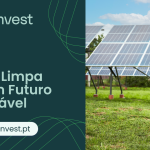Market volatility, excellent quality property, and transport connectivity drive US and overseas buyers to the Algarve
Text: Chris Graeme Photos: Color Shop by Joaquim Morgado
Portugal’s premium and luxury residential markets stand to gain from the increased market volatility across asset classes as a direct consequence of US tariffs.
This is according to Kelcie Sellers, Associate Director of Global Research at Savills based in London, who gave an overview of the global real estate market and how Portugal factored within the global context.
Kelcie was one of three guest speakers who addressed around 150 people at an event organised by the American Club of Lisbon at the Grémio Literário on Wednesday evening.
Tariff volatility drives investment in property
Kelcie from Atlanta, Georgia, admitted that in terms of the global economy, the past few months had been a “rollercoaster” and a “rough ride”.
“We had ‘Liberation Day’ on April 2”, when Donald Trump had announced a tariff regime which caused a “shake in the market” taking the US trade volatility index “off the scale” .
She explained that the current tariff regime was “about the same as in the 1930s” but added that despite the U-turn on the worst tariff excesses, there was still “a lot of uncertainty in the market” which will be “here for the long haul”.
The good news in 2025 had been that the economy had been expected to follow a similar path to previous crises with a soft landing, but since the tariffs were introduced it is “now a case of a bumpy landing”.
“Tariffs lead to uncertainty, and this causes volatility, which in turn leads people to look for safe havens” such as property investment”, Kelcie remarked.
Falling GDP growth forecasts
The scale of the tariffs suggested a shift in the residential markets with different scenarios to consider. “What we do expect is that these tariffs will be a downside risk with a range of upside and downside scenarios”, Kelcie predicted.
In early May, the World Economic Forum and OECD revised their economic growth forecasts downwards from 3.2% to 2.8% for 2025. “I think that’s slightly optimistic, I forecast about 2.5%, if that”.
Kelcie explained that real estate was a GDP-linked asset class with an impact on interest rates and volatility in the bond market; all with implications on real estate values.
According to Savills, the world real estate market is currently worth around US$ 286 trillion – five times the value of commercial property, and seven times the value of the world’s agricultural land, and also outstripping global equities and gold, which while a store of value, is just US$12 trillion or 4% of global real estate total value.
Lisbon with 6% capital value growth
In the past two years the rental market has outperformed the sales market (2023-2024) within the context of a higher interest rate environment, and towards the end of 2024 interest rates came down with the gap between the capital values narrowing with more people returning to the sales market.
In 2024 Kelcie said there was a 2.2% average capital value growth across the index, but 4.3% rental price growth. Spanish cities saw the highest capital growth for the year with 9.4% in Madrid and 8.6% in Barcelona, while Lisbon saw almost 6% capital value growth in 2024.
However, across 30 locations worldwide on the index, 70% of locations saw positive capital growth for the year, while at the end of last year, Savills predicted an average capital value increase of 1.6% for the year 2025. (Lower than in 2024)
That said, property and sales taxes such a transfer tax and stamp duty also have to be factored in. Singapore is the most expensive country to buy prime residential property since in April, 2023 the government decided to double its buyers stamp duty overnight from 30% to 60%.
Honk Kong, however, lowered its stamp duty for second homes and overseas buyers on long residence permits taking it from one of the most expensive places to transact to one of the cheapest.
And for those people who don’t want to move permanently, changing working habits are seeing executive nomads looking to rent or even buy properties and be based in locations such as Portugal for an extended period of time, and doing so via digital nomad visas.
“These executive nomads are driving prime residential markets and turning once seasonal destinations into all-year-round locations”, said Kelcie.
To be considered too are aspects such as good connectivity; both digital and by air; a very high quality of life (preferably a sunny climate), and a strong prime residential growth market.
In the top 25 global locations Dubai and Abu Dhabi come 1st and 2nd, but also Malaga, Lisbon and the Algarve, Barcelona and Miami are all in the top 10.
Portugal – one of the most active markets in the world
Kelice Sellers points out that the draw of Portugal means that it “continues to be among the top locations in the world”.
Portugal, she says, stands out because of its truly global buyer base. In recent years Savills has seen increasing numbers of buyers from across Europe and the United States.
Another focus has a been families with children looking to base themselves in Portugal for a longer period of time.
“This has been driving growth in international schools as well as a trend where people are choosing to base their families in Portugal while travelling to Lisbon or other destinations across the continent for work reasons, with access to International airports and schools key to such family relocations”, Kelcie explains.
Rental market booms with “try before you buy”
Kelcie notes that the rental market performed well in 2024 among executive nomads and others who wanted to rent first and try out the location before making up their minds to buy a property.
In Lisbon, for example, the rental market has been outperforming the sales market over the past three years with capital values in this index growing by more than 14% over that period causing rents to almost double in premium and luxury segments, which in a market with supply constraints is causing the market to be impacted more widely.
In the Algarve, Quinta do Lago and Vale do Lobo are the two most expensive locations, with an average prime residential price per square meter of €14,500 for Quinta do Lago and €14,000 for Vale do Lobo.
Other regions across the Algarve range from about €6,000 per square metres within and just outside the Golden Triangle, and around €4,000 per square metres in other regions.
“However, the calibre of the properties is excellent across the region with a couple of drivers for the market in Portugal, including a dramatic increase in foreign buyers, particularly Americans, but also an increase in demand and supply constraints that have had an inflationary effect on prices, while improved connectivity in terms of flights from Newark to Faro only enhancing the Algarve’s popularity as a safe haven property investment and relocation destination”, concludes Kelcie Sellers, the global property market expert from Savills.










